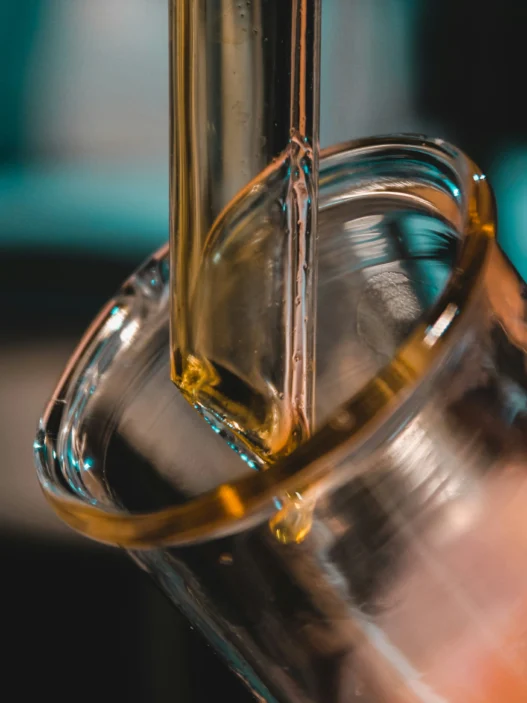Dicyanamide, a chemical compound primarily used in the field of coordination chemistry, may not have direct implications on the average individual’s daily routine. However, its properties and applications play a crucial role in various industries such as pharmaceuticals, agriculture, and material science. In pharmaceuticals, dicyanamide may serve as a building block for the development of novel drugs, while in agriculture, it can be utilized as a fertilizer additive. Overall, dicyanamide’s versatile nature and unique characteristics make it a key component in several products and processes that impact our everyday lives indirectly.
Table of Contents:
- 💡 Commercial Applications
- ⚗️ Chemical & Physical Properties
- 🏭 Production & Procurement
- ⚠️ Safety Considerations
- 🔬 Potential Research Directions
- 🧪 Related Compounds
💡 Commercial Applications
Dicyanamide, a chemical compound with the formula N(CN)2, has various commercial and industrial applications. It is commonly used as a hardening agent in epoxy resins, imparting increased strength and resistance to chemicals. Additionally, dicyanamide is utilized in the production of flame retardants for textiles and plastics, enhancing the fire resistance of these materials.
In the realm of drug and medication applications, dicyanamide is less commonly utilized compared to its industrial uses. However, it has shown potential as an anti-parasitic agent in research studies. Dicyanamide has demonstrated efficacy against certain parasites, making it a subject of interest for potential pharmaceutical applications in the future.
Overall, dicyanamide’s versatile properties make it a valuable compound in a variety of commercial and industrial applications, particularly in the realm of material science, while also showing promise in potential medicinal uses in the field of parasitology.
⚗️ Chemical & Physical Properties
Dicyanamide appears as a white crystalline solid with no distinct odor. It is often used in various industrial applications due to its unique chemical properties.
Dicyanamide has a molar mass of approximately 83.08 g/mol and a density of about 1.41 g/cm^3. This places it in a similar range as common food items such as sugar and salt in terms of molar mass and density.
The melting point of dicyanamide is around 209°C, while its boiling point is approximately 324°C. These values are significantly higher than those of most common food items, which typically melt and boil at much lower temperatures.
Dicyanamide is soluble in water and has a relatively low viscosity. This contrasts with common food items like flour or honey, which may have different solubility in water and viscosity levels.
🏭 Production & Procurement
Dicyanamide, also known as dicyan, is primarily produced through the reaction of cyanamide with cyanogen chloride or by the treatment of cyanogen chloride with ammonia. This process typically takes place in a controlled industrial setting to ensure proper handling and safety measures.
Once produced, dicyanamide can be procured through specialized chemical suppliers that cater to industrial clients. It is typically transported in sealed containers or drums to prevent leakage or contamination during transit. Careful handling and storage procedures are necessary to avoid any potential hazards associated with dicyanamide.
Due to its chemical properties and potential risks, dicyanamide is regulated by various safety protocols and guidelines. Proper labeling and documentation are required when procuring dicyanamide to ensure compliance with regulatory standards. It is important for both producers and consumers to adhere to these regulations to maintain a safe working environment and prevent any mishandling of the substance.
⚠️ Safety Considerations
Safety considerations for Dicyanamide include potential hazards such as skin and eye irritation, respiratory tract irritation, and harmful effects if swallowed or inhaled. It is important to handle Dicyanamide with care and use appropriate personal protective equipment such as gloves, goggles, and a respirator to prevent exposure. In case of accidental exposure, it is advised to seek medical attention immediately and follow proper decontamination procedures.
Hazard statements for Dicyanamide include “Causes skin and eye irritation,” “May cause respiratory irritation,” and “Harmful if swallowed or inhaled.” These statements highlight the potential risks associated with Dicyanamide exposure and emphasize the importance of following safety protocols when handling this substance. It is crucial to be aware of these hazards and take necessary precautions to minimize the risk of harm.
Precautionary statements for Dicyanamide include “Wear protective gloves/eye protection/face protection,” “IF SWALLOWED: Rinse mouth. Do NOT induce vomiting,” and “If inhaled: Remove person to fresh air and keep comfortable for breathing.” These statements outline specific actions to take in the event of exposure to Dicyanamide and emphasize the importance of proper protective measures and emergency responses. It is essential to adhere to these precautions to ensure safe handling of Dicyanamide and prevent potential health risks.
🔬 Potential Research Directions
Potential research directions for dicyanamide include studying its reactivity with various metal ions to explore potential applications in coordination chemistry. Another area of interest is investigating the potential use of dicyanamide in the development of new materials with unique electronic properties. Additionally, research could focus on understanding the environmental impact of dicyanamide and identifying methods to mitigate any adverse effects.
🧪 Related Compounds
One similar compound to dicyanamide, based upon molecular structure, is cyanamide. Cyanamide is a chemical compound with the formula H2N-C≡N. It consists of a cyanide group attached to an amino group. Cyanamide is commonly used in the synthesis of various pharmaceuticals, pesticides, and dyes.
Another compound that shares similarities with dicyanamide is thiocyanamide. Thiocyanamide has the formula H2N-C≡N-SH, containing a sulfur atom in place of one of the oxygen atoms in the cyanamide molecule. Thiocyanamide is used in organic synthesis as a reagent for the preparation of various compounds. Its similarity to dicyanamide lies in the presence of the cyano group in its molecular structure.
One additional compound similar to dicyanamide is isocyanamide. Isocyanamide has the formula H2N-C≡N-OH, with an oxygen atom replacing one of the nitrogen atoms in dicyanamide. Isocyanamide is of interest in coordination chemistry due to its ability to form complexes with transition metals. The presence of the cyano group in both dicyanamide and isocyanamide highlights their structural similarities.





